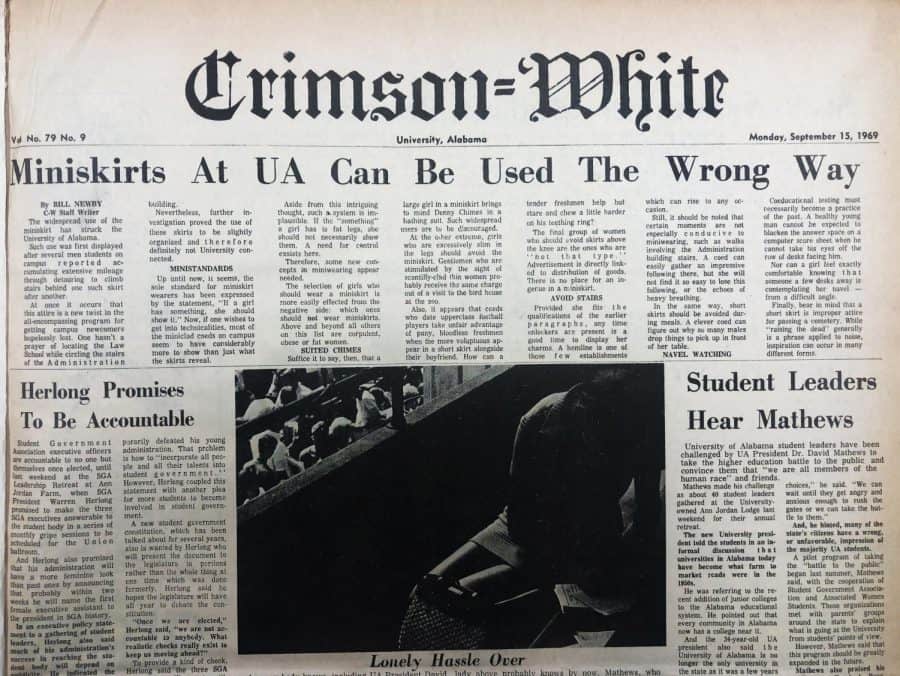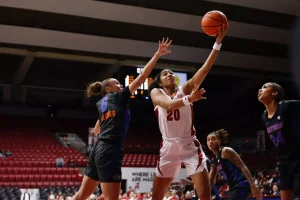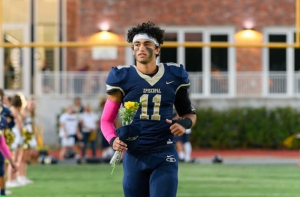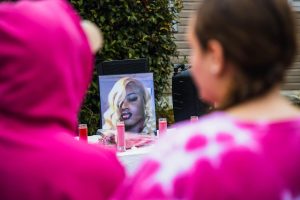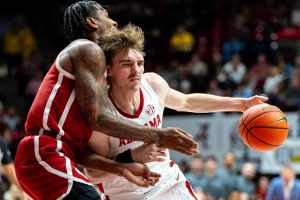Women’s coverage saw a slow evolution at CW
December 5, 2019
The Crimson White’s coverage of women has taken many shapes through the years – from showcasing photos of “beautiful” women students on the front page to hiring a women’s editor and reaching representational equality in the newsroom.
When Abbey Crain trekked across campus six years ago in her tutu and ultra-short hair, it was with the knowledge that she was setting herself apart from the rest of the student body.
“I wanted to differentiate myself from the male gaze,” Crain said. “I wanted to not look like that. At The University of Alabama, there weren’t many dudes, men, I had encountered that were fans of dressing outside the box.”
Crain has a legacy in Tuscaloosa as co-author of the award-winning Crimson White article, “The Final Barrier,” which concerned the integration of sororities. But during her time at the CW, the former culture editor and multifaceted reporter shared an eclectic range of writing. Her regular fashion column combined with hard-hitting journalism changed the way then-CW coworker Laura Testino thought about journalism.
“I think I started [working at the CW] right as [Crain] published ‘The Final Barrier,’” Testino said. “That definitely immediately opened my eyes to how journalism could look different than what I thought it ever could.”
For Testino, Crain provided an example of how a writer could report news that varied in impact and seriousness.
“[‘The Final Barrier’ article] happened, and then I remember Abbey wrote something about a class that taught sex-ed and how that compared to the way sex-ed was being taught throughout other schools in the state of Alabama, but then she would also write these cool fashion columns every week,” Testino said. “So I think I looked to that to kind of see what all you could do as a female journalist.”
The way Crain wrote about fashion in 2013, though, varies greatly from how it was written about historically in the CW. “Miniskirts at UA can be used the wrong way,” a front-page article in a 1969 edition of the CW, is a prime example of then-student Bill Newby policing women’s fashion.
“The selection of girls who should wear a miniskirt is more easily effected from the negative side: which ones should not wear miniskirts. Above and beyond all others on this list are corpulent, obese or fat women,” Newby wrote.
But Newby doesn’t stop there. Others who “should not” wear miniskirts include “girls who are excessively slim in the legs” and women who are “not that type.”
“Provided she fits the qualifications of the earlier paragraphs, any time onlookers are present is a good time to display her charms,” Newby wrote.
Appealing to the male gaze was – and is – a societal expectation put upon more than just straight women. Victoria Boyle, a graduate student studying history with a focus on queer women, said that lesbians in media were historically portrayed to appeal to the heterosexual man of the time.
“There was what was called ‘lipstick lesbians,’” Boyle said. “They were ones that were sexual appealing to heterosexual audiences, normally heterosexual men, as opposed to actual queer women.”
These beauty standards include body size, makeup-use and height, Boyle said.
“There has been this idea of a body standard – normally smaller-framed, blonde-haired women – and if anyone deviates from that, that’s a point of mockery,” Boyle said. “Anyone who’s too tall doesn’t look ‘right,’ if they don’t look hyper-feminine they say ‘Oh, you look too masculine, you don’t look right,’ if they don’t subscribe to makeup standards, they’re called out for that saying they don’t look ‘right,’ they don’t look like they’re feeling well.”
“Bama Belles,” a regular feature in 1960s CW, demonstrated these beauty standards in explicit fashion. Pictures of women adorned the pages of the CW, paired with descriptions about their beauty, hobbies and other information that might be “important” to the reader.
“Fern is a Phi Mu from Tuscaloosa,” the April 9, 1963, feature read. “She is 18, medium height, with brilliant brown hair. She has no distinguishing marks or scars. If you’re interested, just go into the woods where there’s some ‘viney’ trees. She’s a real swinger.”
The features, arguably more accurately described as personal ads, highlighted the importance placed on beauty at the time. Though they take a different form, these standards still persist today.
“I think women are still expected to look pretty, like take that call to look pretty or act like a ‘woman,’” Tina Turner, a senior majoring in news media, said.
Turner said her family had hoped she would maintain a certain level of beauty in order to continue a legacy.
“My Aunt Joan, in the 70s, she was the black Homecoming Queen,” Turner said. “I mean, she was Homecoming Queen, but she was one of the first black ones. So, I grew up hearing that up hearing my grandma say, ‘I love [The] University of Alabama because they made my daughter … Homecoming Queen.’ I think she just wants me to keep that image because I’m the only grandkid who went to UA.”`
Turner didn’t succumb to the expectation she faced. She said she was too tired for that.
“If y’all not ready for the real me, I just can’t help it,” Turner said.



